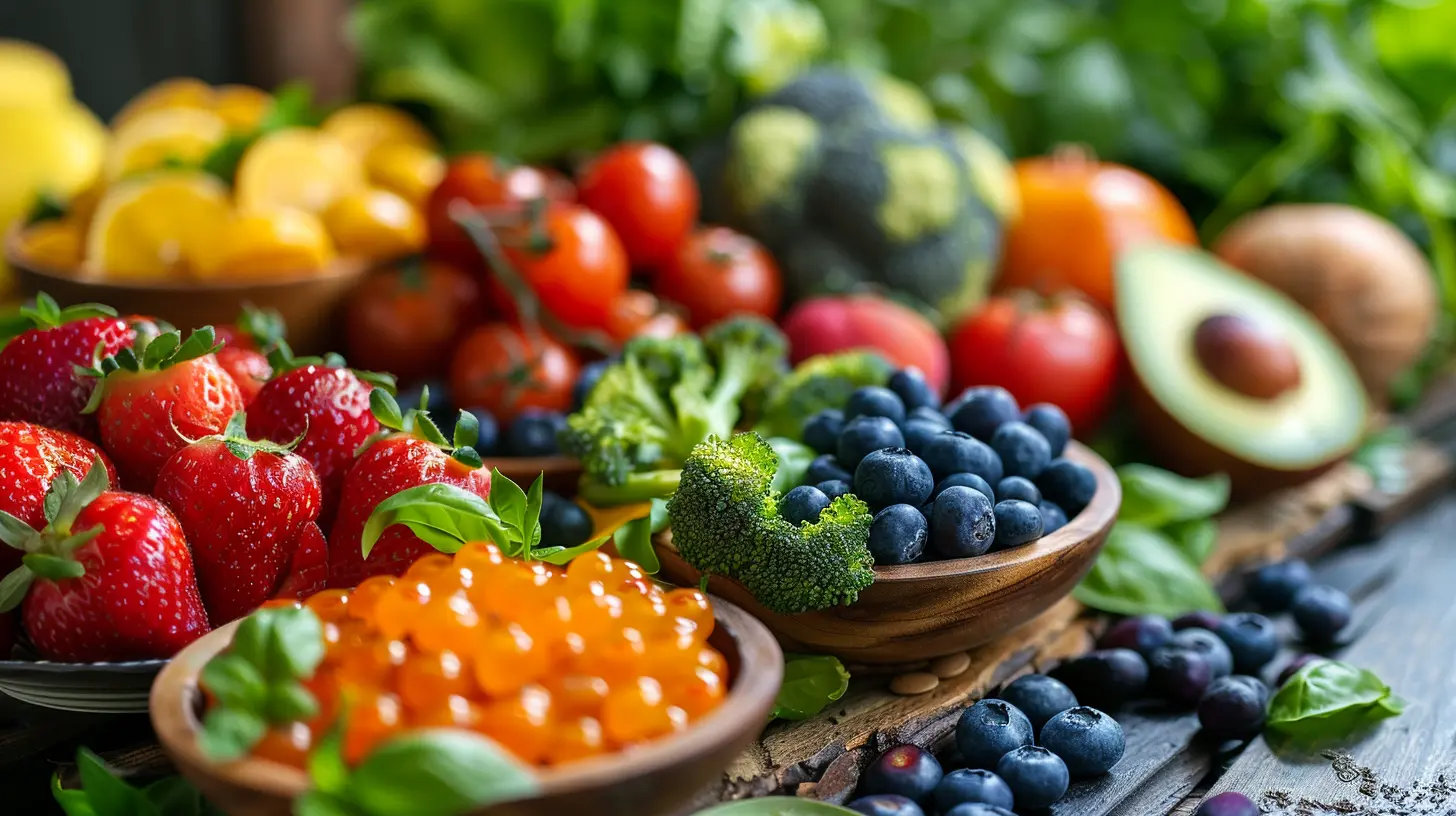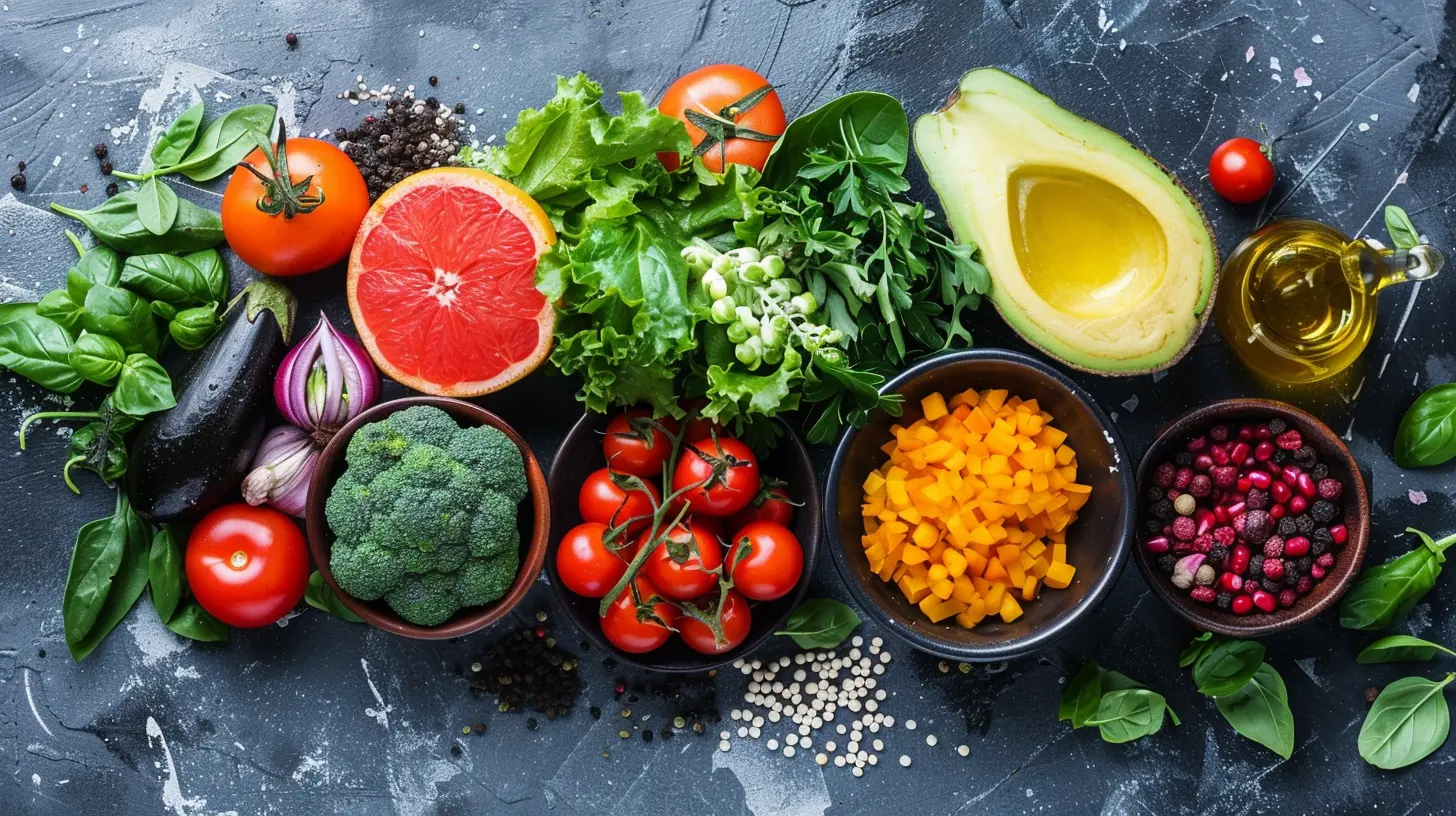How to Create a Balanced Diet on a Budget
3 November 2025
Let’s be real — eating healthy can seem like a pricey mission. With organic kale costing more than a burger and avocado toast being the "bougie" breakfast of choice, it’s easy to assume that a balanced diet is out of your financial league. But here’s the truth — you don’t need to break the bank to eat well.
Whether you're a college student ballin' on ramen noodles or a parent juggling bills and baby food, sticking to a budget and eating right can go hand-in-hand. In this guide, I'll walk you through how to create a balanced diet on a budget without sacrificing flavor, fun, or your financial sanity.
Why a Balanced Diet Actually Matters
Before we dive into the how, let’s talk about the why.A balanced diet fuels your body, boosts your energy, stabilizes your mood, improves immunity, and helps prevent chronic diseases. It's not about going keto, paleo, vegan, or whatever is trending this week. It's about feeding your body a good mix of:
- Carbohydrates (your main energy source)
- Proteins (body repair and muscle maintenance)
- Healthy fats (brain function and nutrient absorption)
- Vitamins & minerals (the behind-the-scenes superheroes)
But again — healthy doesn’t have to mean expensive. Let's break it down.
1. Change Your Mindset: Health ≠ Expensive
First things first, you've got to lose the myth that “healthy = pricey.” That’s marketing talking, not science. You can absolutely eat clean, green, and lean without shopping exclusively at upscale grocery stores.Bulk bags of rice, beans, oats, and veggies can stretch a long way for little money. Frozen fruits? Just as nutritious as fresh, and cheaper too. Canned tuna? Protein packed for pennies.
Think of it like building a financially friendly food puzzle. Once you know the pieces, you’ll be amazed at what you can create.
2. Plan Your Meals Like a Boss
Meal planning is your secret weapon, especially on a budget. Every unplanned meal is a chance to overspend or hit the drive-thru. Here’s how to make it work:🛒 Make a Weekly Meal Plan
- Pick 3-4 main meals you can rotate (think stir-fry, taco bowls, soups, pasta).- Use ingredients that overlap to reduce waste and cost.
✍️ Create a Smart Shopping List
- Don’t just list items — organize them by grocery store section.- Stick to it like it’s the gospel, and avoid impulse buys.
🍱 Cook Once, Eat Twice
- Leftovers are lifesavers. Double up recipes and freeze portions.- Prepping in bulk means less waste and way less stress.
Let’s face it — winners prep.
3. Shop Smart: Budget-Friendly Grocery Hacks
Saving money at the store isn’t just luck — it’s strategy. Here’s how to outsmart your receipts:🏷️ Buy Generic Brands
They often have the same ingredients as the name brand, just without the fancy packaging.🧊 Go Frozen Over Fresh
Frozen veggies and fruits are harvested at their peak and cost way less. Bonus: they last way longer.🥫 Choose Canned Wisely
Canned beans, tomatoes, and tuna can be nutritious and ultra-convenient. Just rinse off excess sodium when needed.🧺 Shop In Bulk
Store staples like oats, rice, and lentils in large containers to save money and reduce packaging.🕓 Know the Sales Cycle
Most stores rotate sales every 6–8 weeks. Stock up when your staples are on sale.And here's a golden tip — never shop hungry. It’s a surefire way to leave with a cart full of chips and chocolate.
4. Go for Whole Foods (Not the Store)
Not everything needs to come in a box. Whole foods — like fruits, vegetables, grains, and legumes — are typically cheaper and healthier than processed alternatives.Consider this:
- A bag of brown rice can make 10+ servings for the same price as one fast-food meal.
- A pack of dried beans can stretch across several dinners — and we’re talkin' protein, fiber, and nutrients.
Eating clean on a budget is all about getting back to basics.
5. Balance on Your Plate
So, what does an actual balanced plate look like when you’re pinching pennies?Here’s a simple formula:
- 1/2 plate of vegetables or fruit (fresh, frozen, or canned)
- 1/4 plate of lean protein (eggs, beans, chicken, tofu)
- 1/4 plate of whole grains (brown rice, oats, whole wheat bread)
Need some meal inspo?
- Breakfast: Oatmeal topped with banana and peanut butter
- Lunch: Lentil soup with whole grain bread
- Dinner: Stir-fry with frozen veggies, rice, and scrambled eggs
- Snacks: Carrot sticks, boiled eggs, homemade popcorn
Simple. Affordable. Nutritious. Boom.
6. Cut Costs Without Cutting Nutrition
How do you trim your grocery bill while keeping your meals nutritious? Here’s your cheat sheet:✂️ Reduce Meat, But Keep Protein
Meat is pricey. You don’t need to go full vegetarian, but subbing in plant proteins like:- Lentils
- Chickpeas
- Black beans
- Eggs
- Peanut butter
These options are cheaper, last longer, and still keep you full.
🧉 Skip the Sugary Drinks
Sodas and energy drinks suck up your cash and add little value to your diet. Stick to water, teas, or coffee at home.🍪 Limit Packaged Snacks
They may be convenient, but they're usually high in sugar, salt, and cost. Instead, make your own trail mix or energy bites.Saving money sometimes means rolling up your sleeves — but your wallet (and body) will thank you.
7. Cook at Home – Your Kitchen is a Goldmine
Dining out might seem easier, but those quick fixes add up fast.- A $12 takeout meal = 3 home-cooked meals.
- A $5 latte = a week’s worth of oats and fruit.
Not only do you save big by cooking at home, but you also control the ingredients, portion sizes, and quality of the meal.
Even if you’re a beginner, start with simple stuff. Scrambled eggs today. Spaghetti tomorrow. Before you know it, you’re the Gordon Ramsay of budget cooking.
8. Grow Your Own (Yes, Even in an Apartment)
You don’t need a backyard or green thumb to grow your own food. A windowsill, a jar, and some dirt can yield herbs, green onions, or even cherry tomatoes.- Start with easy herbs like basil, mint, or parsley.
- Regrow veggies like romaine, scallions, or celery from kitchen scraps.
- Use pots, buckets, or recycled containers to grow small veggies.
It’s cheap, satisfying, and kind of magical.
9. Mindful Eating = Less Waste (and Weight)
Remember, eating well isn't just about what you eat, but how.Slow down. Chew. Savor. You'll feel fuller, eat less, and waste less.
Plus, if you keep track of what's in your fridge (and use leftovers creatively), you won't toss out so much food — which is basically throwing money in the trash.
Stews, salads, wraps, and smoothies are great ways to use up bits and pieces before they spoil.
10. Use Apps and Tools to Budget Better
Let technology help you save. Try these tools:- Mealime – Free meal planning, grocery list creation
- Flipp – Weekly flyers and discounts in your area
- Ibotta – Cashback on groceries
- Yummly – Recipes using ingredients you already have
Knowledge is power, especially when you’re shopping smart.
Final Thought: You Got This
Eating a balanced diet on a budget isn’t just possible — it’s empowering. You don’t need fancy supplements, trendy superfoods, or a private chef. With a little know-how, smart shopping, and some kitchen hustle, you can nourish your body without depleting your bank account.Remember: it’s not about perfection, it’s about consistency. Baby steps today lead to big wins tomorrow.
So, are you ready to take control of your diet and your budget? Your wallet and your waistline are both about to breathe a little easier.
all images in this post were generated using AI tools
Category:
NutritionAuthor:

Jackson Mahoney
Discussion
rate this article
1 comments
Valen Heath
Thank you for sharing these practical tips! It's inspiring to see how we can prioritize our health without breaking the bank. Your suggestions make balanced eating feel achievable for everyone.
November 22, 2025 at 4:55 AM

Jackson Mahoney
Thank you for your kind words! I'm glad you found the tips inspiring and achievable. Prioritizing health doesn't have to be expensive!


